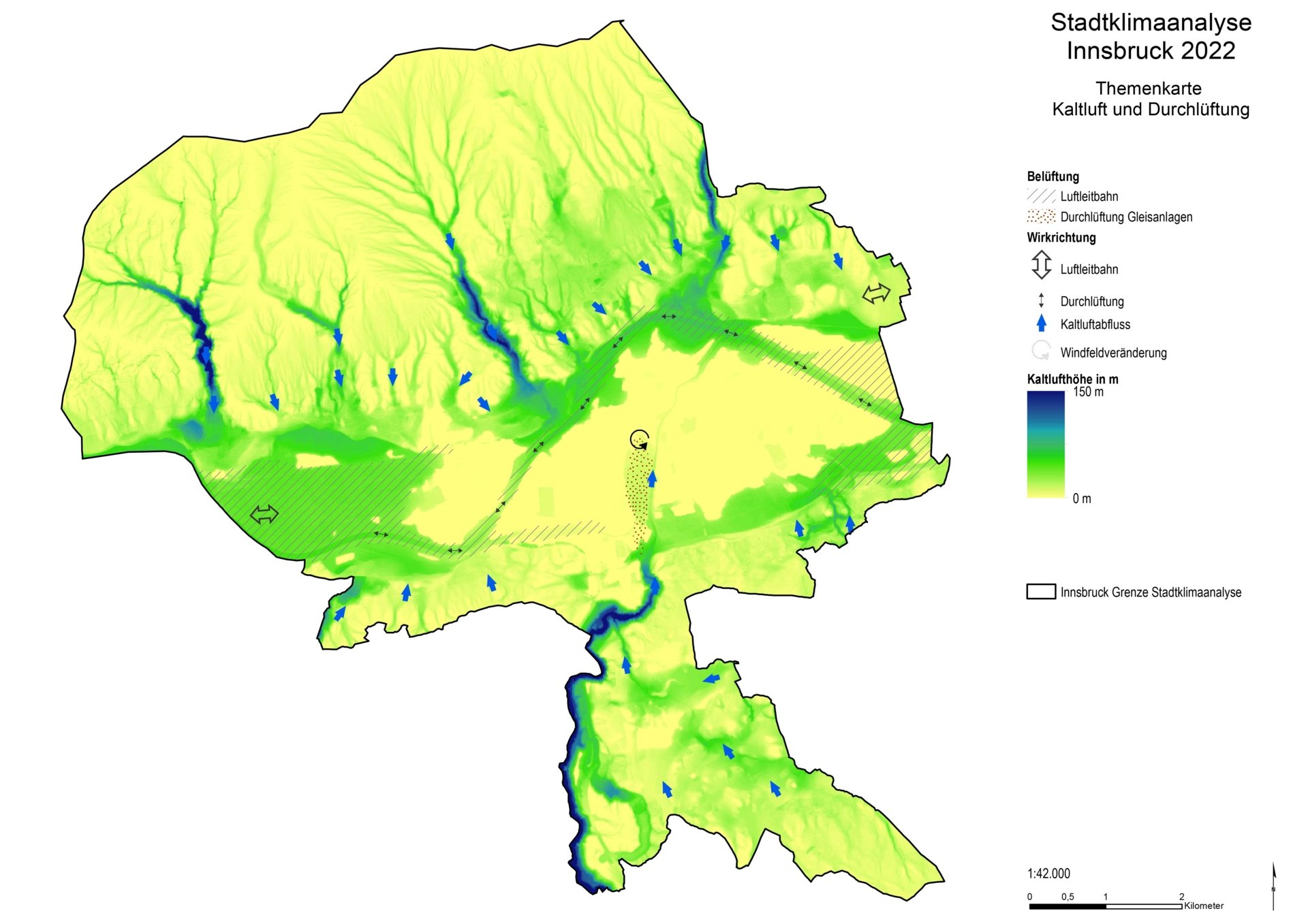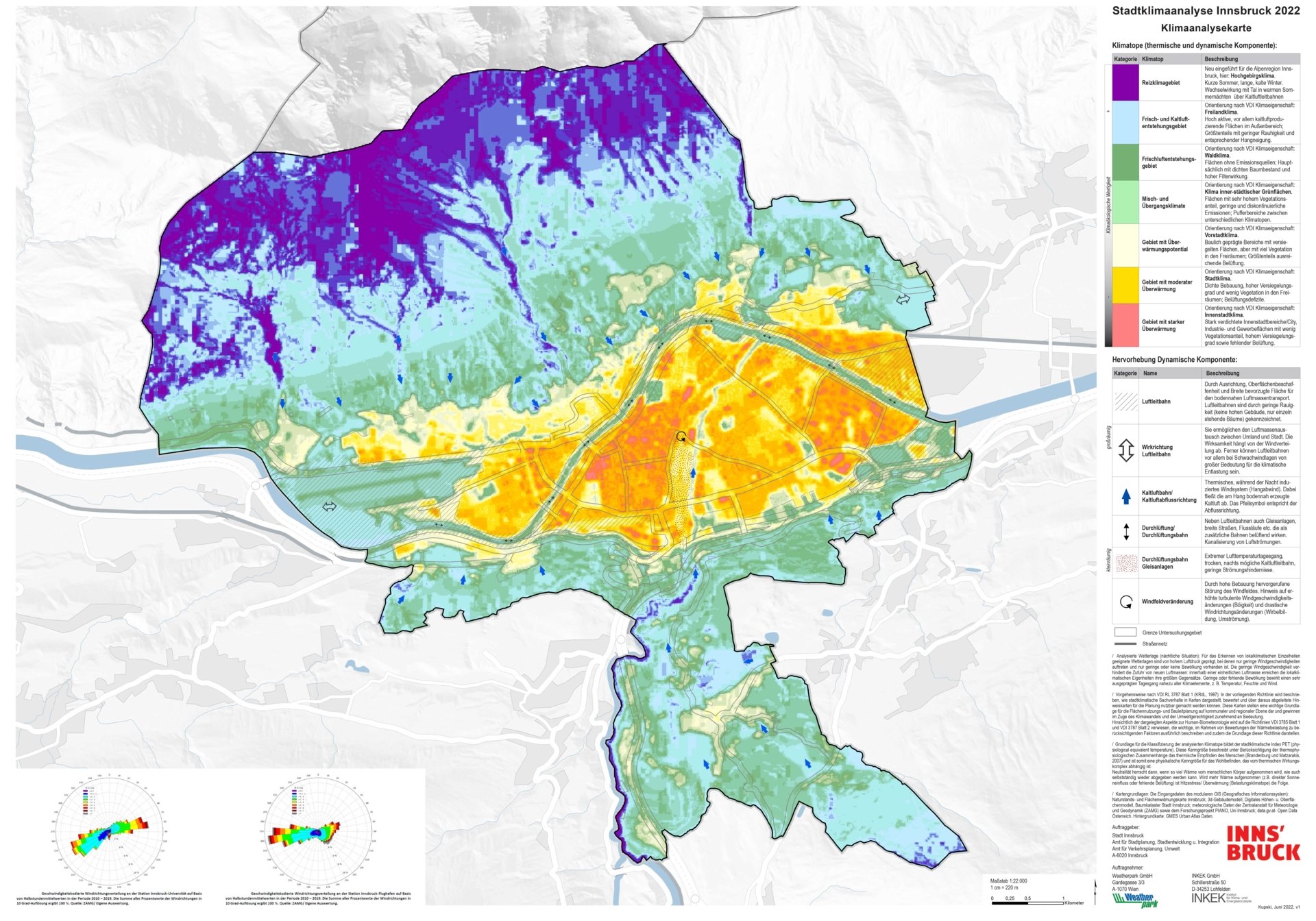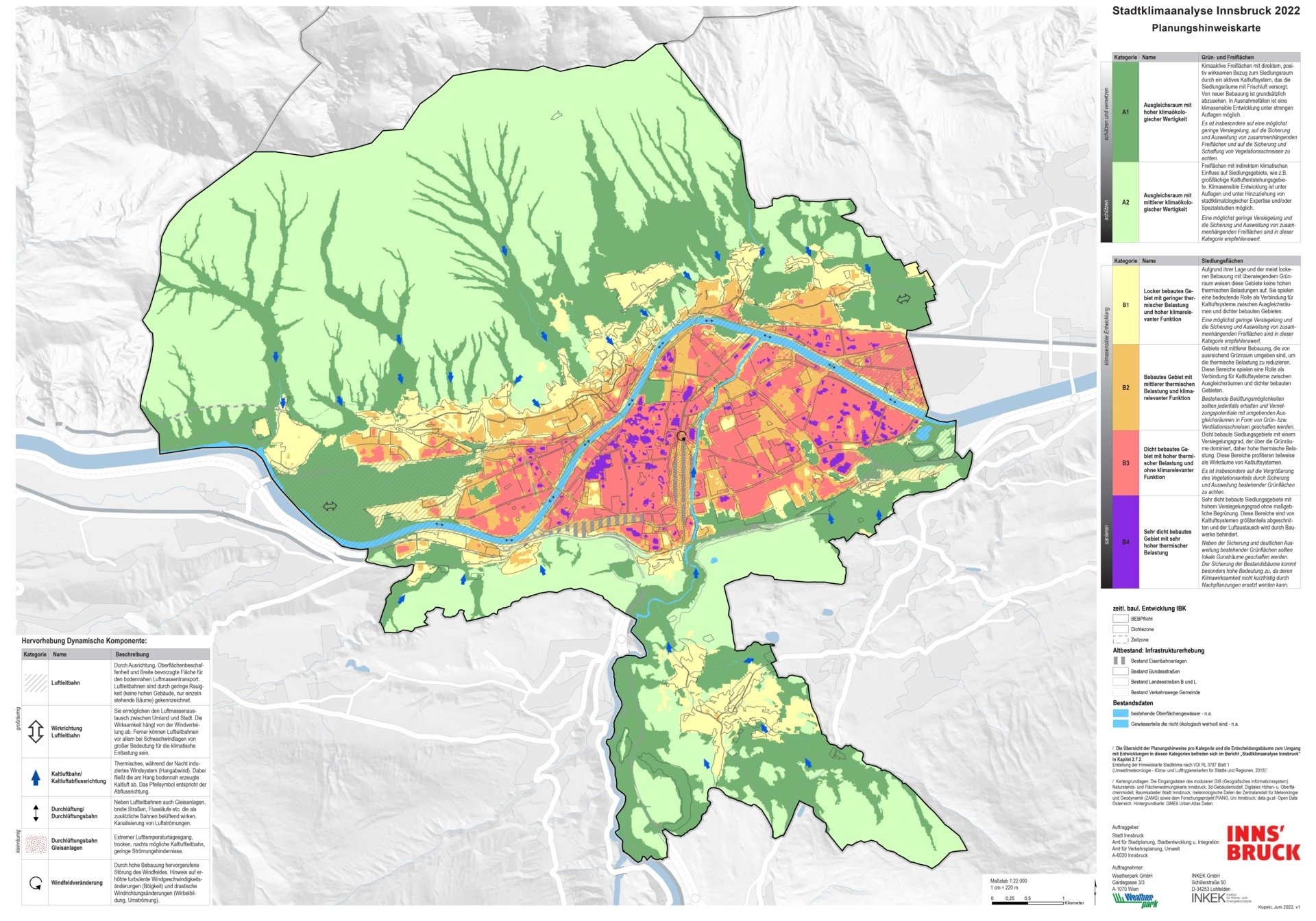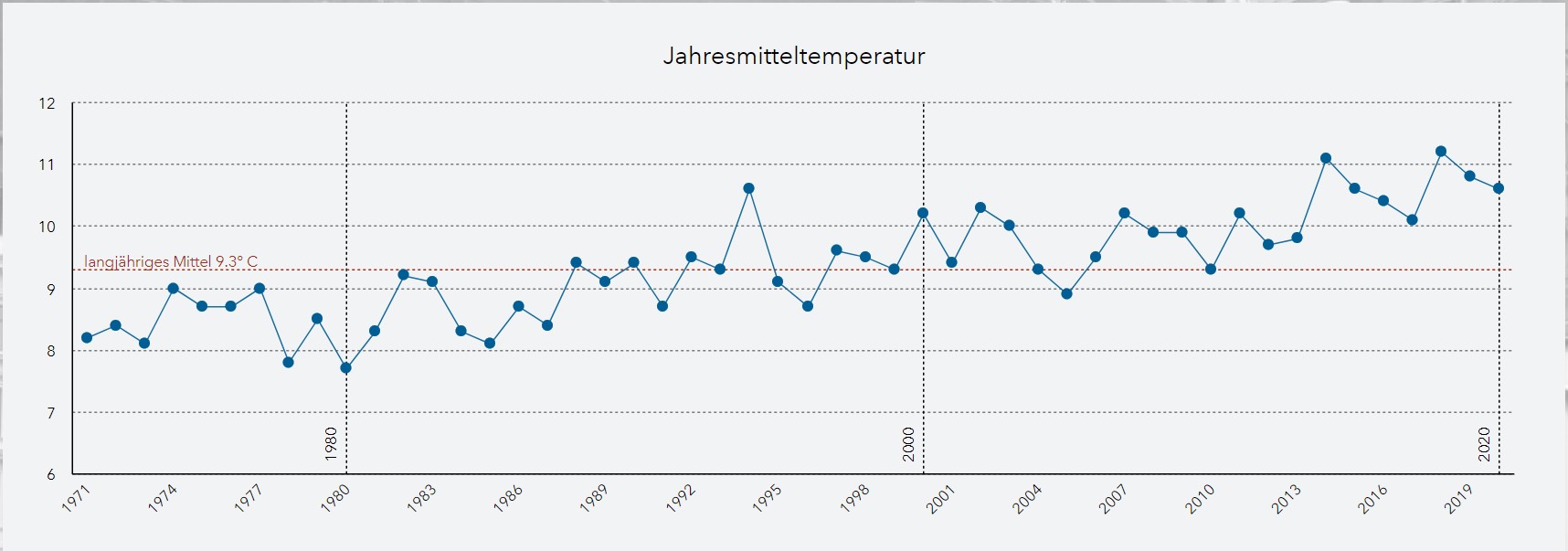Climate change is happening. And it's happening at an accelerating pace - faster than the original projections calculated.
By 2020, average global warming was 1°C. In Austria, the average temperature has risen by around 2°C since 1880. These measurements show that the Alpine region and thus also the Tyrolean capital will have to reckon with about twice the warming than the global average.
The warming trend - on this scale and at this speed - is clearly noticeable for all residents of the city of Innsbruck. This was especially evident in the summer of 2022: The number of heat days and the intensity of heat periods increases noticeably and a seasonal shift of the occurrence of the 1st heat days is clearly visible.
in 2020 , a survey of Innsbruck's climate and an overview of urban climate modeling with a focus on heat stress was carried out in cooperation with the
Central Institute for Meteorology and Geodynamics (ZAMG) prepared.
Heat as a challenge
Climate change has many facets, but heat poses particular challenges to cities due to dense development, sealed surfaces, and often low air exchange that brings cooling.
Modeling shows an increase in the frequency of summer and heat days: with 25 heat days, Innsbruck has twice as many heat days as Salzburg (12) and 10-20% more than Klagenfurt (max. 21). The temperature differences between the densely populated inner-city area and the urban periphery can be as much as 6°C.
In addition to heat, drought, heavy rainfall events and extreme wind phenomena are also increasingly affecting cities.
Urban climate analysis Innsbruck 2022
The urban climate analysis was commissioned by City Department Urban planning, mobility and integration and Service Unit Urban climate and environment.. and prepared by Weatherpark GmbH in cooperation with the Institute for Climate and Energy Concepts (INKEK GmbH).
It is a comprehensive, systematic analysis of the current state of Innsbruck's urban climate, was compiled in accordance with the VDI (Association of German Engineers) and supplemented by a summer measurement campaign.
The urban climate analysis is used, for example, to locate fresh air and cold air corridors so that they can be protected in a more targeted manner. The analysis also shows which areas of the city are particularly overheated and which local adaptation measures (greening, unsealing, etc.) are necessary.
Results of the urban climate analysis
The urban climate analysis includes - in addition to a comprehensive results report including recommendations - the following maps:
- Thematic maps (building volumes, cold air and ventilation) provide the basis for the climate analysis map and the planning information map.
- The Climate analysis map contains an overview of the climate phenomena relevant to the urban area and their spatial distribution. In order to do justice to Innsbruck's extreme topography, the "stimulating climate" climatope was developed. This high mountain climate is characterized by short summers and long, cold winters. Its significance lies in the interaction with the valley locations via the cold air channels during warm summer nights. The Sill gorge and the course of the Sill through the city also represent a special structure; they form a fresh air corridor that extends far into the city. These are just some of the special features of this climate analysis map.
- The Planning information map evaluates the partly complex urban climatic functions. In this way, the climatic sensitivity of different areas can be determined and their value spatially assigned. The resulting recommendations and information are aimed at improving climatic conditions, coordinating future urban developments and mitigating the effects of predicted climate change as far as possible.
The planning information map was divided into six categories: two categories are compensation areas, which are areas worthy of protection due to the cold air. Four categories concern partially or completely built-up settlement areas, which are designated with more or less thermal pollution. There are specific recommendations with a mix of proposed measures for all categories. - Scenario maps: For climate-conscious, sustainable urban development, it is not only necessary to react to the current situation, but also to take expected changes into account. To this end, scenario maps were drawn up for Innsbruck to illustrate the effects of future urban development and the predicted climate change up to 2100:
- Urban development "continue as before" in relation to the current climate and the climate forecast RCP 8.5
- Urban development "strong focus on climate change adaptation" in relation to the current climate and the climate forecast RCP 8 .5
Improving quality of life and protecting vulnerable groups
In order to maintain a high quality of life - despite the already noticeable and unavoidable effects of climate change - climate change adaptation is necessary at a city-wide and strategic level.
The results of the urban climate analysis underline the importance of (cold) airways for night-time cooling. Even though the number of hot days is increasing, the city of Innsbruck has not (yet) recorded a significant increase in tropical nights. Nights when the minimum temperature does not fall below 20°C are considered to be particularly stressful for the human organism.
Vulnerable groups such as elderly and impaired people or small children are particularly affected. They need to be protected and measures such as building structures need to be put in place at an early stage, as well as public relations work and early warning systems need to be expanded.
Outlook
The results of the urban climate analysis are to be integrated into all processes within the municipal administration and also in cooperation with the municipal participations, and the implementation of measures - based on the recommendations - is to be broadly applied in the respective fields of action. This primarily concerns the following fields of action:
- Planning processes: Implementation of the findings of the urban climate analysis in planning processes at different planning levels. Regular evaluations are to ensure that the city's internal processes are practicable and goal-oriented. Indicators, threshold and limit values for the establishment of a city-internal system for the application of the urban climate analysis are to be elaborated and corresponding proposals for binding framework conditions (in the sense of obligatory requirements and recommendations) are to be made.
- Risk management and early warning systems: The risk analysis of the climate change adaptation strategy is to be revised based on the new findings of the urban climate analysis and risk management is to be adapted accordingly. Based on vulnerability analyses, important socio-economic conclusions can be drawn and prioritizations can be made.
- Communication processes (internal and external): interdisciplinary cooperation within the municipal administration is an essential building block for a successful handling of the results of the urban climate analysis, but it is also important to raise awareness among stakeholders and the population. This requires not only technical information but also a broad-based communication strategy. Also beyond the city limits, a strengthening of the cooperation with the surrounding communities, the promotion of national (city cooperation) and international exchange with cities should be pushed.



